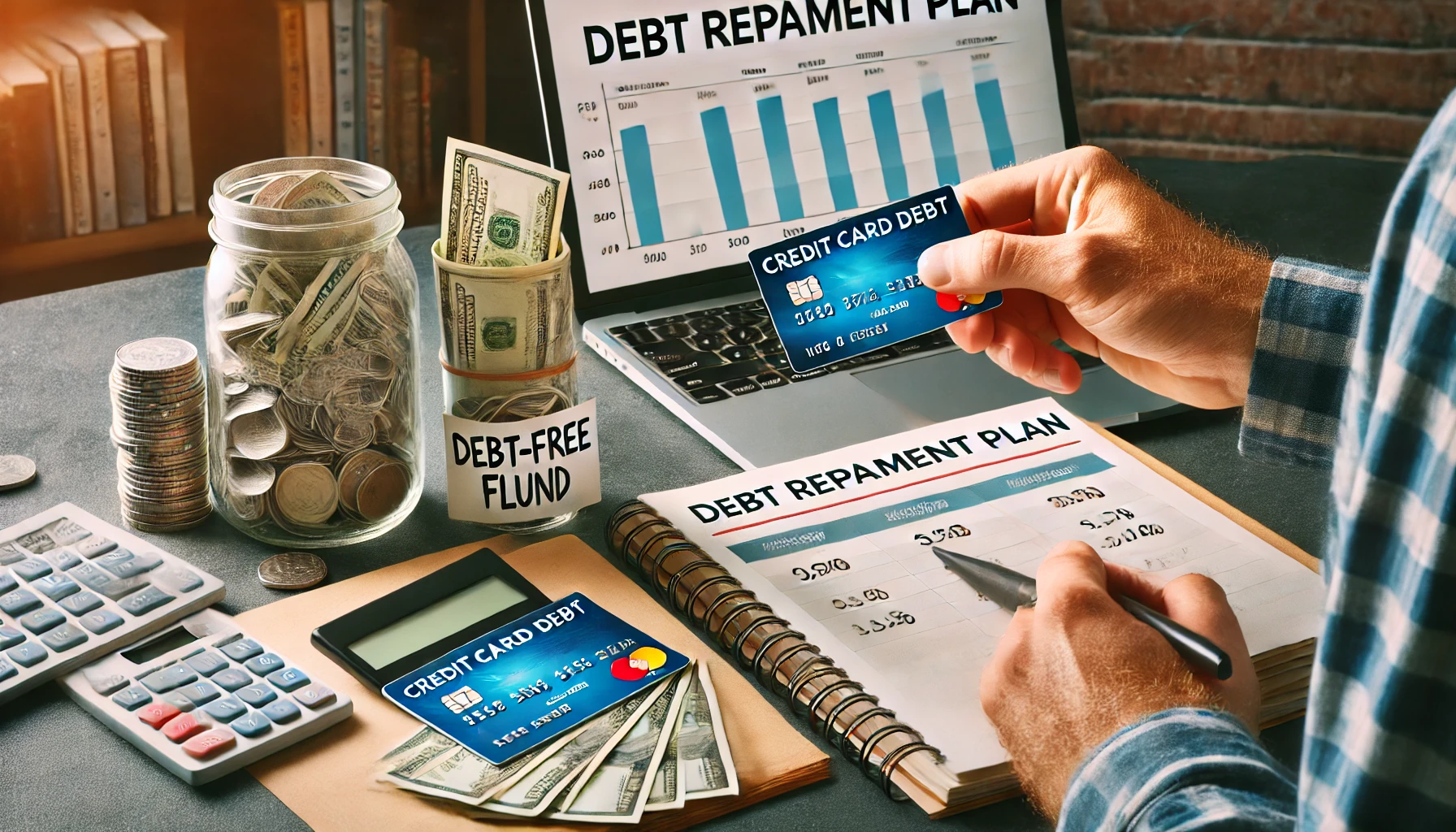Credit card debt can quickly spiral out of control due to high interest rates and minimum payments that barely make a dent. However, with the right strategy, you can pay off your debt efficiently and avoid falling into the same trap again.
In this guide, you’ll learn step-by-step methods to eliminate credit card debt and smart habits to keep your finances under control.
Why Credit Card Debt Is Dangerous
Credit cards can be useful for building credit and making purchases, but when mismanaged, they can lead to serious financial stress.
The Risks of Carrying Credit Card Debt:
🚨 High-Interest Rates – Some credit cards charge 15-30% APR, making it hard to pay off debt.
🚨 Minimum Payments Trap – Paying only the minimum keeps you in debt for years.
🚨 Damage to Credit Score – Carrying high balances lowers your credit utilization ratio.
🚨 Financial Stress – Monthly payments eat into your budget, making it harder to save.
💡 Example: If you owe $5,000 on a credit card with a 20% interest rate and only make minimum payments, it could take 10+ years to pay off!
Step 1: Stop Using Your Credit Cards
If you’re serious about paying off your debt, pause all new charges on your credit cards.
✅ Remove saved credit card info from online stores
✅ Use a debit card or cash for everyday purchases
✅ Unsubscribe from shopping emails to avoid temptation
💡 If you rely on your card for necessities, switch to a cash-only system until your debt is under control!
Step 2: List Your Credit Card Debt
Make a complete list of your credit card balances, interest rates, and minimum payments.
📌 Example:
| Credit Card | Balance | Interest Rate | Minimum Payment | Due Date |
|---|---|---|---|---|
| Visa | $3,000 | 22% | $90 | 15th |
| MasterCard | $1,500 | 18% | $50 | 5th |
| Amex | $2,500 | 25% | $75 | 20th |
💡 This will help you choose the best repayment strategy!
Step 3: Choose a Credit Card Payoff Strategy
There are two popular methods to pay off credit card debt:
📌 The Snowball Method (Best for Motivation)
✔ Pay off the smallest balance first while making minimum payments on others.
✔ Once the first card is paid off, roll that payment into the next smallest balance.
✔ Repeat until all debts are gone.
📌 Why it works: Quick wins keep you motivated!
📌 The Avalanche Method (Best for Saving Money)
✔ Pay off the highest interest rate card first while making minimum payments on others.
✔ Once it’s paid off, move to the next highest interest card.
✔ Repeat until you’re debt-free.
📌 Why it works: You save the most on interest in the long run!
💡 If you have multiple high-interest cards, the avalanche method is the best choice!
Step 4: Transfer High-Interest Debt to a Lower-Interest Option
If your credit card has extremely high interest, consider transferring the balance to a lower-rate option.
Debt Repayment Options:
✅ Balance Transfer Credit Card – Some cards offer 0% APR for 12-18 months.
✅ Debt Consolidation Loan – A personal loan with a lower interest rate can simplify payments.
✅ Negotiate a Lower Interest Rate – Call your credit card company and ask for a lower rate.
💡 Example: Moving a $5,000 balance from a 25% APR card to a 0% balance transfer card can save you hundreds in interest!
Step 5: Free Up Extra Money for Payments
The more money you can allocate toward debt, the faster you’ll pay it off.
Ways to Find Extra Cash:
✔ Cut non-essential expenses (subscriptions, dining out, impulse shopping)
✔ Use cashback and rewards to make payments
✔ Sell unwanted items for quick cash
✔ Take on a side hustle (freelancing, rideshare driving, tutoring)
💡 Even an extra $100 per month toward your credit card can reduce your repayment time significantly!
Step 6: Automate Payments and Avoid Late Fees
Missing a payment can result in late fees and penalty interest rates.
✅ Set up automatic payments for at least the minimum amount
✅ Schedule reminders a few days before the due date
✅ Make biweekly payments instead of monthly to reduce interest faster
💡 A single late payment can increase your interest rate—avoid it at all costs!
Step 7: Build an Emergency Fund to Avoid Future Debt
Many people fall back into credit card debt because they don’t have savings for emergencies.
📌 Goal: Build a small emergency fund of at least $500 to $1,000 to cover unexpected expenses.
💡 Once your credit card debt is gone, redirect that money into your savings!
Step 8: Use Credit Cards Responsibly in the Future
Once your debt is paid off, avoid repeating the same mistakes.
Smart Credit Card Habits:
✔ Pay the full balance every month to avoid interest
✔ Use credit only for planned purchases
✔ Keep your credit utilization below 30% (less than $300 per $1,000 limit)
💡 If you struggle with self-control, consider using a secured credit card with a lower limit!
Final Thoughts: Take Control of Your Credit Card Debt Today!
Paying off credit card debt is possible with a solid plan and consistent effort. By taking action now, you can regain control of your finances and build a debt-free future.
📌 Action Steps:
✅ Stop using credit cards and focus on paying off existing balances
✅ List your debts and choose a repayment strategy
✅ Cut expenses and find extra cash for payments
✅ Consider balance transfers or debt consolidation if needed
✅ Automate payments to avoid missed due dates
✅ Build an emergency fund and practice responsible credit habits
The sooner you start, the sooner you’ll be credit card debt-free! 🚀

